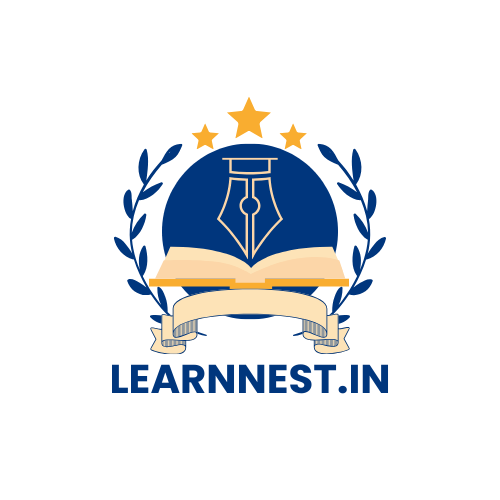
Sushruta (A Peep into the Past Q & A
Q.1. Answer the following questions :
(a) Who was Sushruta?
Ans:Sushruta was an Indian Ayurvedic physician.
(b) Who was Shalihotra?
Ans:Shalihotra was the father of Veterinary Sciences.
(c) What question did Shalihotra ask to test Sushruta?
Ans:The question Shalihotra asked to test Sushruta was, ‘What all would he would need to perform a surgery on a wonderful horse?.
(d) How long a period did Shalihotra allow to find the missing things?
Ans:Shalihotra allowed a week to find the missing things.
(e) How did Sushruta find the missing things? (Select appropriate answer)
(1) By reading several books
(2) By consulting his friends
(3) By observing his teacher carefully and thinking about what he did
(4) By meditating
Ans:By observing his teacher carefully and thinking about what he did.
(f)Who erected the first known veterinary hospitals of the world?
Ans:The great Emperor Ashoka erected the first known veterinary hospital of the world.
Q.2. What were the three things that Sushruta discovered?
Ans:The three things that Sushruta discovered were, a good veterinarian should have:
(1) an eagle’s eye
(2) a lion’s heart
(3) a mother’s touch
Q.3. Explain the meaning of the following phrases:
(a) An eagle’s eye, (b) A lion’s heart, (c) A mother’s touch.
Ans:(a) an eagle’s eye – a close watch, observe keenly The tigress watched her cubs with an eagle’s eye to keep them away from danger.
(b) a lion’s heart – someone who is very brave The Indian soldiers fought with a lion’s heart and won.
(c) a mother’s touch – tender, loving, caring touch I am not scared of my dentist because he has got a mother’s touch in all that he does.
Q.4. Narrate the story of Susharuta in your own words.
Ans:Sushruta was an Indian Ayurvedic physician widely regarded as the ‘Father of India medicine’ or ‘Father of surgery’ and ‘Father of Plastic Surgery’.He wrote one of the world’s earliest works on medicine and surgery.Sushruta was known as the main author of the treatise ‘The compendium of Sushruta’ (Sushruta Samhita).
Q.5. Write short notes on the following:
(a) Veterinary Science in ancient India
Ans:Veterinary therapy developed very early in India. Based on the Ayurveda, Indian veterinary medicine is known for its specialised literature, which provides information on ancient methods of preventing and treating diseases of animals. Shalihotra, the founder of veterinary medicine, has been attributed the oldest existing veterinary texta treatise entitled ‘Asvayurveda Siddhanta’.
(b) Care of animals in the regime of Emperor Ashoka.
Ans:The great Emperor Ashoka erected the first known veterinary hospitals of the world. Giving animals general tonics and stimulants was practiced in order to ensure good mental and physical health. Prevention of the occurrence of diseases was also given importance. Cleanliness of animals, maintenance of stalls and stables, quality of food, disadvantages of overfeeding were also looked after during the regime of Emperor Ashoka.
(c) Utilization of animal by-products in the ancient world.
Ans:Utilization of animal by-products was also done wisely by our ancestors. Conversion of milk into butter, ghee, curd, khoa, etc., was practiced. Chicken for its meat and sheep for its wool were also utilized in the ancient world.
Q.6. Form pairs. Complete the following table through discussions.
Q.7. Note these pairs of words: care-carefully, equal-equally.
Here we see that the letters ‘-ly’ are added at the end of the word to make another word. A letter or group of letters added at the end of a word to make another word is called a suffix.
(a) Use the suffix ‘-ly’ to make other words from the following:
subsequent, frequent, wise, immense, beautiful
- subsequent – subsequently
- frequent – frequently
- wise – wisely
- immense – immensely
- beautiful – beautifully
(b) Find two examples each, of the words made by using the following suffixes.
-ness, -er, -let, -ful, -tion/sion,
- ness – awareness, cleanliness
- er – recover, career
- ful – wonderful, sorrowful, painful
- tion/sion – information, cultivation, profession
- y – quickly, carefully, equally,luckily
- let – booklet, armlet, leaflet, droplet
Q.8. Frame questions beginning with the following words, based on the above passage.
Who, What, Where, When, How, Why (One question each)
1) Who
Ans:Who are veterinarians?
2) What
Ans:What were the three things?
3) Where
Ans:Where did Emperor Ashoka arrange for cultivation of herbal medicines for men and animals?
4) When
Ans:When did veterinary therapy develop in India?
5) How
Ans:How did Shalihotra treat animals?
6) Why
Ans:Why did veterinarians start accompanying armies?
Q.9. Visit a library: Find more information/stories about scholars of the ancient world – Aryabhatta, Bhaskaracharya, Varah Mihir, Charak, Nagarjuna, Jeevak.

I want to salute who make this website because images are amazing and blogs are short
Thank you,i am so glad that you visit my website